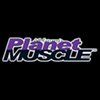Today's Industry
I have a passion for this industry. Today, while there are more quality protein products than ever, we have all become guilty of selling smoke and mirrors and just lately, say in the last five years, this has gotten out of hand. All of the trade magazines are partially responsible.
You can pick up any magazine that sells proteins and you'll see multiple page diatribes referred to as advertorials. These long, bell-and-whistle ads, while cleverly disguised to look like unbiased independent articles are, instead, nothing but long-winded propaganda rather than fact. They pretend to quote science and tout research, but they don't, as references listed have no actual bearing on the claims made within the advertorial.
Magazines that accept these kinds of ads are selling out to money and unwittingly hoodwinking the uninitiated consumer. Why? Because the consumer very seldom views these as less than an unbiased article and not a blatant advertisement, even though it says in the very fine print, 4-6-page advertisement. (Most of the time you can barely read that admonition.)
Do we really need to try and hoodwink consumers when we have so much positive information on protein?
Explanation
Research shows that athletes have higher protein requirements than non-athletes. Scientists have repeatedly shown that high protein diets increased protein synthesis by a minimum of 35% whereas low protein groups show just a 10% increase in protein utilization. Studies indicate that protein degradation can be reduced by over 60% in high protein groups compared to less than 30% in the low protein groups.
Let's look at a cogent comment from researchers at the Applied Physiology Research Laboratory at Kent State University. In 1995, they concluded:
| "The roles of the additional required dietary protein and amino acids are likely to be quite different for those engaged in endurance exercise (protein required as an auxiliary fuel source), as opposed to strength exercise (amino acids required as building blocks for muscle development). However, both groups likely will benefit from diets containing more protein." |
This means EVERYONE who works out, no matter what kind of workout, benefits inextricably, from additional protein ingestion.
Feed Your Muscles
Muscles require protein to grow, repair and recover. It's no wonder since three-quarters of all the solids in the human body are proteins. They include structural proteins, enzymes, nucleoproteins, proteins that transport oxygen, proteins that perform many types of specific functions intracellulary and extracellulary throughout the body, not to mention the proteins that actually comprise muscle.
That being so, our prime question has to be, is there one protein source that is best?
This is when consumers must separate fact from fiction and true scientific data from implied science, or what it is commonly called advertorial pseudo-science and half-truth.
The Facts
Knowing we need more protein, the first phase of enlightenment is the protein source. Which is best, milk isolates, whole egg protein, egg albumin (whites), whey concentrate, isolate or hydrolysate, vegetable proteins or meat or fish protein?
In proteins, amino acids are aggregated into long chains by means of peptide linkages. These peptide 'chains' of amino acids form the structure of proteins. So, in this semi-complicated explanation of amino acids and their part in forming proteins, lies the answer to "which protein is best."
Industry views have been slanted and twisted by slick marketing and pressure tactics from various manufacturers as the industry has evolved. What we once believed to be gospel, PER (protein efficiency ratio) and NR (nitrogen retention), have been supplanted by BV (biological value), NPU (net protein utilization) and predicted total amino score.
It has really become an advertising war. Egg vs Milk. Whey vs Casein. Peptides vs Concentrates. Ion Exchange vs Cross-Filtered Filtration. It has become a world of sub-titles and sound bites instead of hard, factual observation.
Past
Over the last 10 years, based on low manufacturing costs and a very selective skewing of research, various marketers have scorned some protein sources, propagating only whey, a milk protein, instead. Many of these non-training marketers have assassinated good old egg white and milk isolates and have literally screamed out about the supposed horrors of casein, another milk protein.
My Opinion
I happen to agree strongly with what Jeff Everson has written in the last 2-3 years (and I don't even know Jeff, having met him only once briefly). He has constantly stressed the variability of the human body to manufacture protein and process all kinds of varying food amino acid sources, such that there are probably fewer differences among commercial proteins than one would believe.
In other words, he and I believe that all proteins are good, all have benefits, some better than others depending upon the metabolic scenario. But in no case, he has stated, does it make any sense to trumpet so-called shortcomings of the competitors. I second his opinion strongly that companies should instead, focus on the positives of their own products because proteins are applied over such a wide biological spectrum.
Real Winners
Companies should know their own products well enough to sell them on their own benefits rather than by slamming a competitor's product. The real quality companies, like Labrada, Twin Labs, Optimum, MET-Rx, and Sportpharma, NEVER slam other companies.


